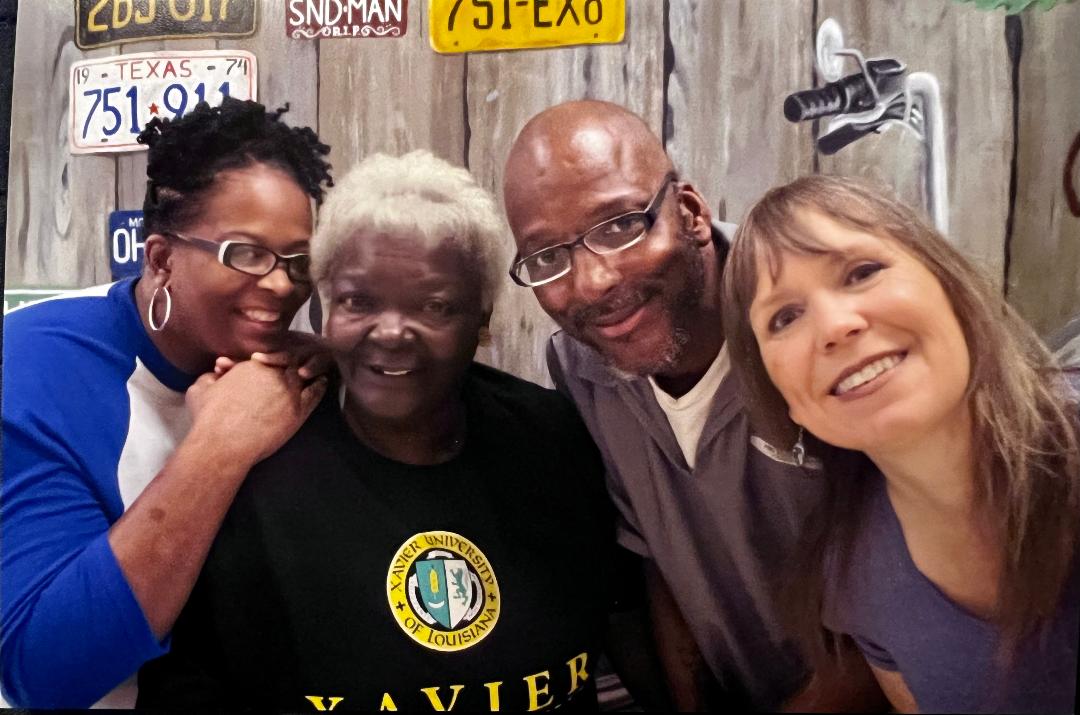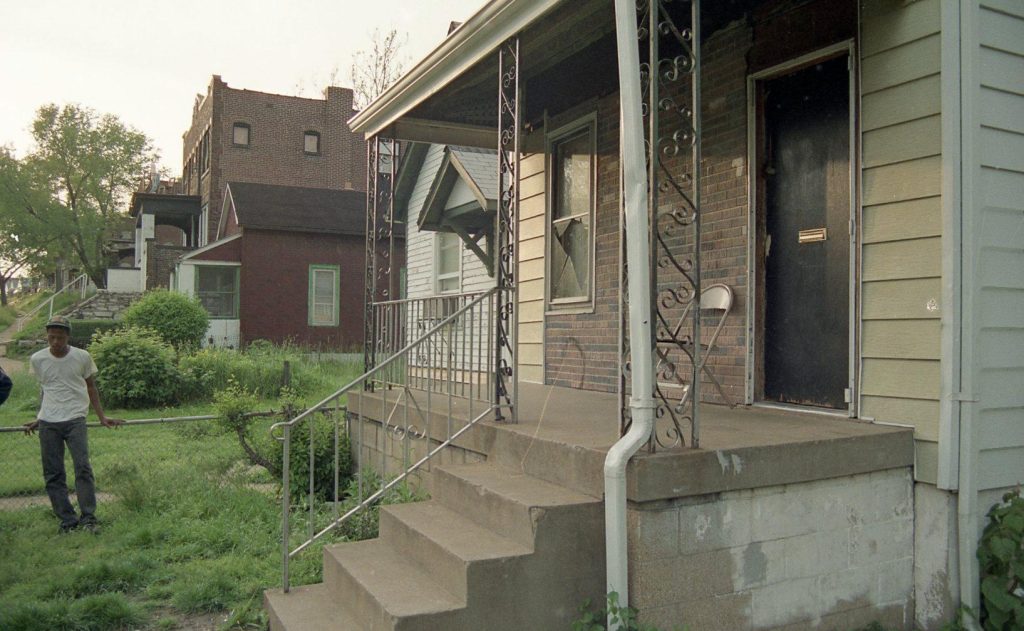
28 Oct Christopher Dunn Series Part I: The Prosecution’s “Case”
On May 18, 1990, a man named Christopher Dunn shot and killed a man named Rico Rogers and shot and almost killed DeMorris Stepp and Michael Davis. At least that was the prosecution’s theory in the case against Christopher Dunn and during trial back in July of 1991. A jury eventually bought it, convicting Mr. Dunn of first-degree murder and leaving him in prison for the rest of his life.
In this article, Part I of a three-article series on Christopher Dunn, you will see the prosecution’s case against Christopher Dunn. Literally. I’m going to simply copy and paste the opening, closing and rebuttal arguments made by the prosecutor, Steve Ohmer, an Assistant Circuit Attorney, at Mr. Dunn’s trial from more than 30 years ago.
But, before I do that, I want to start with a warning about what the prosecution’s case against Christopher Dunn’s case had—and, perhaps more importantly, what it didn’t. The case against Mr. Dunn had testimony from witnesses. But, to use the words from the prosecutor, Mr. Ohmer, himself, the case against Mr. Dunn didn’t have much else: “There is no statement. There is no real physical evidence we’re talking about.”
So, with that backdrop in mind, this is the prosecution’s version of events in its case against Mr. Dunn…
The Prosecution’s Opening Statement
Thank you, Your Honor. May it please the Court, Miss Good, ladies and gentlemen:
Back around midnight on the 19th of May of 1990, Rico Rogers, DeMorris Stepp, and Michael Davis were sitting on the front porch at 5607 Labadie in the City of St. Louis. And while they were sitting on the porch talking, the defendant, Christopher Dunn, comes toward them with a gun and begins to fire shots at the three of them.
Rico Rogers, DeMorris Stepp, and Michael Davis begin to run, and as they begin to run, Rico Rogers falls to the ground. DeMorris Stepp stops, tries to grab him, and then continues to run.
The police are called, ambulance responds, Rico Rogers is taken to the hospital where he dies as a result of a gunshot wound in the back of the head.
The police respond and DeMorris and Michael identify the defendant.
[Mr. Dunn’s lawyer, Janis Good, objected based on a prior motion, and the judge, the late St. Louis Circuit Court Judge Michael B. Calvin, allowed Mr. Ohmer to continue. I have omitted that exchange.]
As the person who did the shooting and the police are able to arrest the defendant.
I’m confident that after you hear all the evidence in this case that your verdicts will be guilty of Murder in the First Degree and Armed Criminal Act in that the defendant shot and killed Rico Rogers, and guilty of Assault in the First Degree and Armed Criminal Act in that the defendant shot at DeMorris Stepp, and guilty of Assault in the First Degree and Armed Criminal Action in that the defendant fired shots at Michael Davis.
Thank you.

The Prosecution’s Closing Statement
May it please the Court, Miss Good, ladies and gentlemen:
First of all, I want to thank each and every one of you for your time, your patience, your attentiveness during the trial.
[Mr. Ohmer spends almost half of his closing statement (three out of seven transcript pages) explaining Judge Calvin’s instructions. While these explanations mattered at the time, the focus of this article and this series as a whole centers on the evidence against Mr. Dunn, not the prosecution’s efforts to explain the legal elements of the charged crimes in a prosecution-friendly way. Accordingly, I have omitted this part of the closing statement.]
Now, let’s look at the evidence. Let’s look at what the evidence shows.
Back on the 19th Rico Rogers is on the front porch. Rico Rogers gets shot in the back of the head, is taken to Barnes Hospital, and Dr. Graham tells you that he dies as a result of the gunshot wound in the back of the head. That, ladies and gentlemen, is uncontradicted.
Police Officer Billings, Sgt. George, later on that same day, locate the defendant, attempt to arrest him. There’s a chase as the defendant runs, and finally is apprehended. That, ladies and gentlemen, is uncontradicted.
Then we have DeMorris Stepp. [T]here’s three people — four people at the scene at the time of the shooting. And DeMorris Stepp tells you that Rico is seated up here, Michael is next to him, and DeMorris is standing at the bottom of the steps. And they are talking and all of a sudden the defendant comes from between the houses and he sees the gun and shots fired. Turns to run — they all turn to run — and Rico is hit and falls. No words are said by the defendant and he continues to run.
Comes back and Rico is laying there and Michael had also fallen near him. And Michael gets up and Rico doesn’t get up and sees that he’s shot in the head. Police respond. Tells the police, Det. Stittum, what happened and I.D.s — and tells him Christopher Dunn did it. I.D.s a photograph.
[Ms. Good objected, and Judge Calvin allowed Mr. Ohmer to continue. I omitted that exchange.]
I.D.s a photograph of Christopher Dunn, and later on looks at a lineup.
[Ms. Good objected again, and Judge Calvin allowed Mr. Ohmer to continue again as well. I omitted this exchange too.]
Thank you, Your Honor. And I.D.s the defendant again and says, “That’s the man.” This evidence, again, ladies and gentlemen, by DeMorris, is uncontradicted.
Then we have Michael Davis. [H]e’s also there with his friends. And he, again, tells you Rico is seated here by the railing, he is next to him, DeMorris is down at the bottom of the steps, and they are talking. And hears a shot, they start to run, Rico falls, and he sees the defendant — looks back, sees the defendant, and he falls. so he acts like he’s hit. He falls down by Rico. And next thing people are all around. He gets up, sees Rico is hit. He, again, talks to Det. Stittum that night, tells him what happened, and that the defendant did it. And looks at the photo and —
[Once again, Ms. Good objected, and Judge Calvin allowed Mr. Ohmer to continue. I also omitted this exchange.]
And I.D.s the defendant.
They know him, both DeMorris and Michael will tell you they know this guy from the neighborhood. It’s not like some stranger and then, “Who is he?” And that evidence, again, ladies and gentlemen, is uncontradicted.
And that’s all the evidence in the case and all that evidence is wholly uncontradicted and proves that the defendant is guilty. There is no question. There is no question that DeMorris was there and was shot at by the defendant and the defendant is therefore guilty of Assault in the First Degree by shooting at DeMorris, and Armed Criminal Action in connection with that, in that he used a firearm, fired a gun at him.
There’s no question that Michael Davis was there and that the defendant fired shots at Michael Davis and used a weapon, used a handgun in doing that. No question, ladies and gentlemen. And therefore he’s guilty of that Assault and Armed Criminal Action in connection with that.
And there’s no question that Rico Rogers, shot in the back of the head and dies as a result of the defendant. Is that Murder First or is that Murder Second? Is there deliberation, cool reflection?
And let’s look, what does the evidence tell you? What does it show you, the uncontradicted evidence? Here’s three kids sitting on a porch talking and not doing anything, just sitting there talking. And all of a sudden this man comes from around the side here, has a gun, and starts shooting. Doesn’t say anything; no words are said. Starts firing. And both DeMorris and Michael tell you they hear three shots.
DeMorris tells you that when he sees him and sees the first shot, it goes right over his head. They start to run; Rico, DeMorris, Michael start to run to get away. The defendant continues to fire and Rico is hit and falls and he’s hit in the back of the head.
And Dr. Graham says, well, he can’t tell how far away the shots were fired from Rico, but it definitely is not a contact wound; it’s not right there.
So here’s a man, comes around the corner at the side of the house, firing shots at these three kids. And then runs. Unprovoked, no words, no nothing. That, ladies and gentlemen, is deliberation. He has a gun, comes around the corner with a gun, has no reason to attack these kids, and starts firing, and continues to fire as the kids are trying to get away and strikes Rico in the back of the head.
I’m confident, ladies and gentlemen, you look at the uncontradicted evidence in this case, that the only true and just verdict that you can reach is guilty. That the defendant is guilty of Murder in the First Degree and Armed Criminal Action in connection with shooting and killing Rico Rogers; that he’s guilty of Assault in the First Degree and Armed Criminal Action for shooting at DeMorris Stepp; and that he’s guilty of Assault in the First Degree and Armed Criminal Action for shooting at Michael Davis.
Thank you.

The Prosecution’s Rebuttal Argument
I, too, ask you folks to use your common sense. You are the representatives of the community, the conscience of the community. And the burden beyond a reasonable doubt is not an impossible burden as the defense would have you believe.
[Ms. Good objected to Mr. Ohmer’s “comment on the burden of proof.” Judge Calvin said, “Keep in mind the nature of the objection.” But he also said that he “won’t sustain” the objection and told Mr. Ohmer to “continue.” I don’t really no what that means. And the jury probably didn’t either. Anyway, I omitted that exchange.]
She wants to talk about what is not in the case, but let’s — your duty is to review what is in the case, what evidence you heard, which is what the witnesses testified to. That evidence, ladies and gentlemen, is uncontradicted. She wants you to say — to believe that DeMorris and Michael are mistaken, they are mistaken, what they tell you doesn’t coincide.
Well, I’m hard-pressed to understand where what they said happened is different from one or the other.
Michael, you remember the testimony. [He] didn’t testify that they saw him after the shots were fired. Michael tells you he’s sitting on the step next to Rico, DeMorris is down at the bottom, and after the shots are fired, “And I started to run, I looked back, Rico falls, I look back and I see the defendant.”
DeMorris says, “I’m standing there and I see the defendant come from between the buildings before any shorts are fired and then I start to run. And Rico falls and I keep running.” I see him, I see the gun, and then shots are fired and then I start to run. And Rico falls and I keep running.” That’s what the testimony was, ladies and gentlemen. And that makes sense. I mean, they’re both looking or doing different things. I mean, that’s what happened. They didn’t say the same or different. I mean, they told you what happened. That’s the evidence.
And, you know, this photograph, like somehow, you know, it was taken during the day and this happened at night — look at the evidence and the testimony. They know this man. It’s not like some stranger all of a sudden appears and starts shooting at them. They know him. And as a matter of fact, I think Michael, I asked him how did he know, how does he know Christopher Dunn? “My friend.”
“How do you know Rico?”
“He’s my friend.”
“How do you know DeMorris?”
“My friend.”
“How do you know the defendant?”
“My friend.”
I mean, those are all kids in the neighborhood. It’s not like, you know, somebody that they don’t know, that they’ve never seen. Why would they just say he did it? Why? Look at their testimony, look at the evidence. And you have to just believe what they are telling you. Because that evidence is uncontradicted.
I applaud those kids. She wants to say they are mistaken. I admire them for the guts to come forward and cooperate and tell what happened. How many times do people — people are too afraid to do anything. And these kids come forward.
And she wants to say DeMorris, he’s got a reason, he’s got a reason to cooperate. Well, if he has such a reason, why did he that night, he told Stittum what happened and that that guy did it? Has he said anything different to you folks than what was said back then, the night it happened? No.
And what does he have? He’s pleading to a fifteen-year sentence, ladies and gentlemen. A chance at probation. But the bottom line, what he has said is nothing different from day one. And that’s the crucial question, ladies and gentlemen. Facts don’t change. Facts don’t change. And he told Stittum the night it happened, and he identified the defendant that day, and that hasn’t changed.
[Judge Calvin gave Mr. Ohmer a “Two minutes” warning. I omitted that, too.]
Thank you, Your Honor. And Michael Davis is exactly the same. And that is the evidence. What those two kids told you happened. There is no evidence to contradict what they are telling you is the truth of what happened.
[Y]ou know, we can’t bring Rico back and I wish we could, but we’re here as a community to see that justice is done. And that us, as a community, can do what we can within our power to see that justice is done. [T]he best justice that we have is our system which is you folks representing the community. And your verdict, your common sense, your consciousness of the community in looking at the evidence and in reaching a verdict and in determining justice, is all that we ask. [T]hat’s all we can do.
And I’m confident that when you look at the evidence, when you look at what you’ve heard here, and you apply that to what the law is, that your only verdict can be that this defendant is guilty of shooting Rico Rogers and of [s]hooting at both DeMorris and Michael.
Thank you very much.

The Jury’s Verdict
Ultimately, that was the prosecution’s case against Christopher Dunn. According to the prosecution’s version of events, the case against Christopher Dunn remained “uncontradicted” throughout trial. Nothing disputed the fact that Mr. Dunn shot at three children sitting on a porch without saying a word to them. In other words, to use Mr. Ohmer’s phrasing, “There is no question” that this happened. “Facts don’t change. Facts don’t change.”
As it turns out, the jury agreed. The jury left the courtroom to begin its deliberation at 11:05 a.m. on July 18, 1991. The jury returned at 11:47 a.m., on July 18, 1991 —just 42 minutes later — with guilty verdicts on all charges. Mr. Dunn has been in prison ever since.
Next week, you’ll see the evidence the prosecution’s case relied on to convince the jury that Christopher Dunn was guilty. And you’ll also see the evidence that the jury didn’t see. Together, I’d encourage you to consider this evidence and decide whether the prosecution’s case against Christopher Dunn was, as Mr. Ohmer repeatedly said, truly “uncontradicted” and whether there was, in fact, “no question” about Mr. Dunn’s guilt. Put another way, is it really true that “Facts don’t change. Facts don’t change.” as Mr. Ohmer said?
We’ll find out next week.
Check back here for a direct link to Part II of this series. Or you can find Part II on the Interrogating Justice homepage or by searching Christopher Dunn in the search bar. To learn more about Christopher Dunn or to support his fight for justice, visit the Support page on the Justice for Christopher Dunn website.

